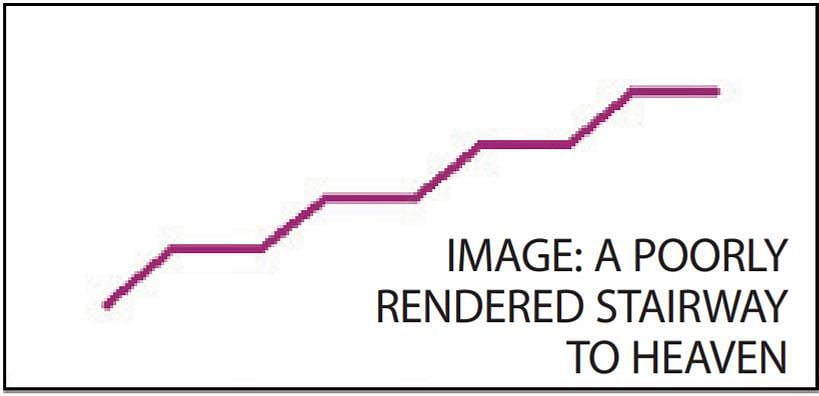The ‘Underwear Index’ to map consumer confidence in post-lockdown world
The COVID-induced global economic recession has no previous parallel and is upsetting all indices used to forecast consumption trends

The Lipstick Index, not surprisingly, has lost all meaning, now that all lips are sealed by the ubiquitous face mask.
This index was coined by Leonard Lauder, chairman of Estée Lauder, who noticed an interesting shift in sales trend following the 9/11 attacks in 2001. He found that against the backdrop of an uncertain future, people still wanted to indulge in shopping but they desisted from buying expensive items – and so most of them bought lipsticks. He observed that in the months following the attacks, his company’s lipstick sales doubled; ergo the Lipstick Index was born.
The Hemline Index, first proposed in 1925 by George Taylor, suggested that skirt hemlines are higher when the economy is performing better, and longer during downturns. Feminists may fume, but economists have developed the idea ever since; not being a hemline watcher myself, I really can’t comment on this one!
The Haircut Index, based on observations by Paul Mitchell, founder of John Paul Dejoria, suggests that customers will visit salons for haircuts every six weeks during good economic times, but every eight weeks when consumer confidence drops. This has certainly gone haywire now as salons and barber shops remain closed and most opt for a cut at home.
The Dry-Cleaning Index, a favourite theory of former US Fed Chairman Alan Greenspan, suggests that when consumer confidence is low, dry cleaning sales figures drop – and resume again when the economy improves. During a lockdown this index is pretty much pointless.
The Men’s Underwear Index, another theory posed by Greenspan, suggested that a decline in men’s underwear sales indicates a poor overall state of the economy, while an upswing in sales predicts an improving economy.

Truth be told, there genuinely are very few indices (read: none) whose assumptions hold well enough to fit empirical data without too many inherent biases.
In the April 2020 Consumer Confidence Survey, conducted by the Reserve Bank of India, the Consumer Confidence Index showed a slight improvement in score – up to 85.6 from 83.7 in January 2020, with a big red arrow pointing upwards right next to it.
Historically, red arrows have pointed downwards and green arrows upwards, although an upward pointing red arrow could hardly be considered a wild novelty given the way 2020 has unfurled so far. But what does this big upward red arrow mean exactly?
“Negative Sentiments with signs of improvement compared to last round” – read the legend at the bottom of the table. So, does that mean Aggregate Demand in the economy is going up? No, let’s not kid ourselves. It is still quite low, and far adrift from the highs recorded a few years ago when the economy hadn’t yet fallen second to partisan political agendas or demonetization fiascos.
Major consultancies have already predicted near-zero growth in the coming days, and a drastic fall in demand in most sectors. Despite multiple cushions being offered to the supply-side of the economy along with multiple liquidity injections, economic growth is unlikely to pick up until Demand grows stronger.
The consumption problem is going to persist – until of course there comes a time when it won’t. Social distancing will become norm, vaccines will be born, the economy will open up completely and ‘Post-COVID Bonanza Sales’ will be on every billboard from Kashmir to Kanyakumari. But perilous is the road ahead.
The recovery shape has been proposed to be akin to almost every letter of the English alphabet. Well maybe except for ‘O’ because then we’d just be going around in circles! Economists have even been creative enough to propose a Nike logo-shaped ‘swoosh’ recovery curve.
Well, I’d like to propose Led Zeppelin’s greatest contribution to mankind as the recovery shape. The ‘Stairway to Heaven’ curve will move upwards – gently sloped and slowly rising – with small intermediate periods of flat growth where the economy intermittently tires itself out while having to climb so many steps, and so it pauses, stops to breathe, and then rises again.
Such a curve will take its own sweet time, but it can only go up – and take along everyone on its way. Until then, think of ways to spend your money – to save the economy, of course!
Follow us on: Facebook, Twitter, Google News, Instagram
Join our official telegram channel (@nationalherald) and stay updated with the latest headlines
Published: 28 Jun 2020, 10:30 AM
